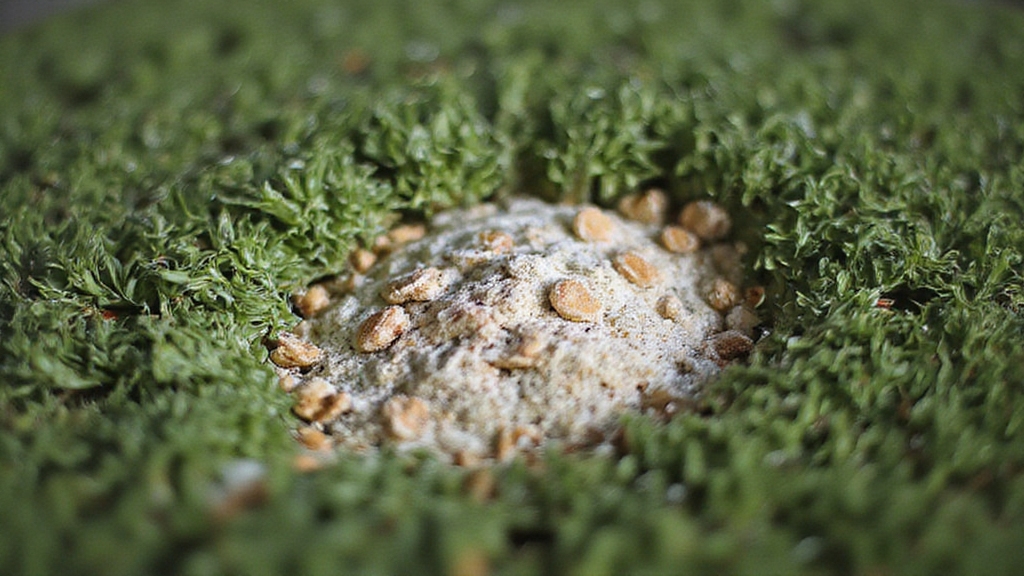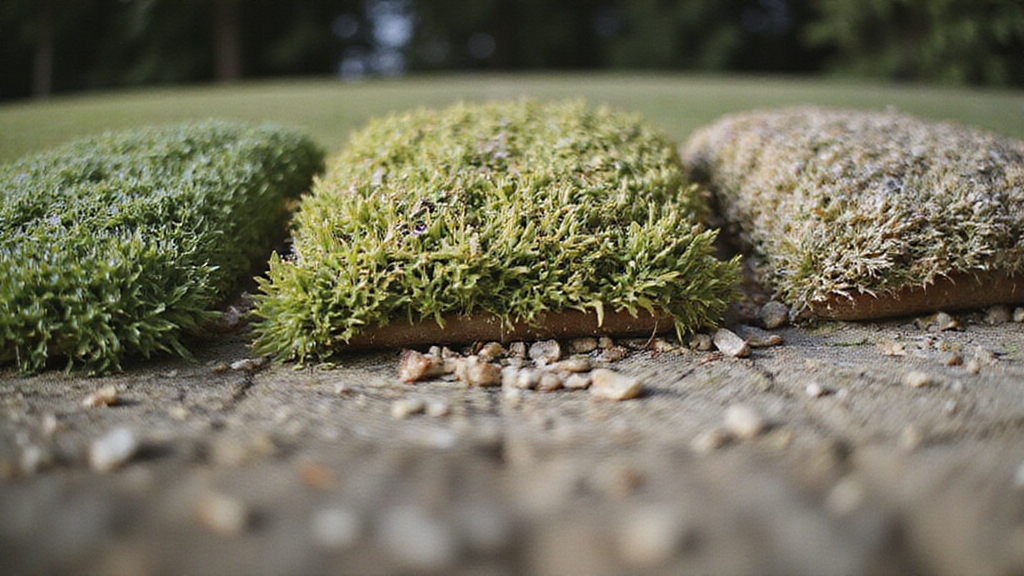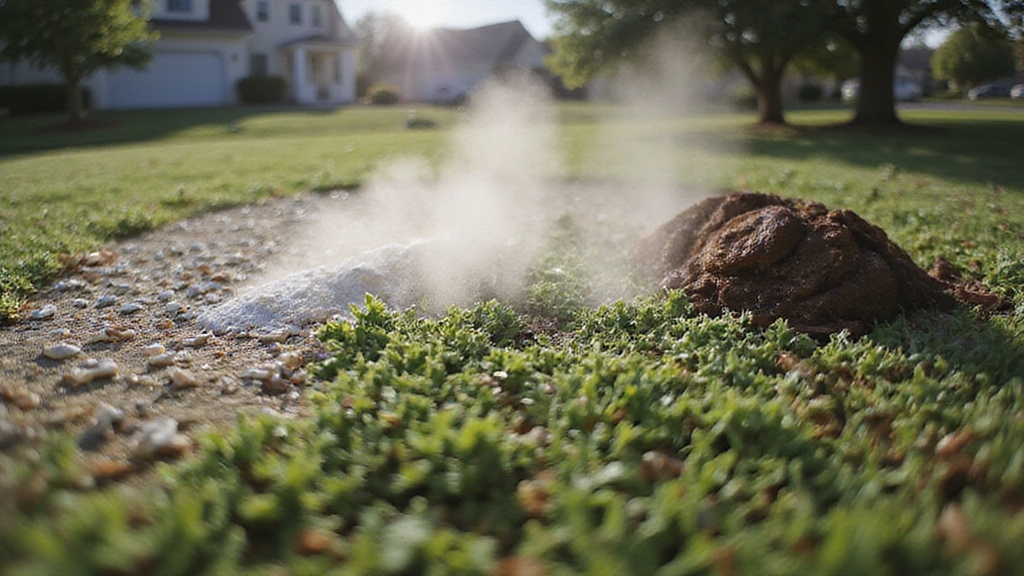Where to dig in?
You’ll achieve a lush, healthy lawn by selecting the best weed and feed products that match your grass type and provide proper NPK nutrition. For cool-season grasses, choose BioAdvanced 5-in-1 or Scotts Weed & Feed, while warm-season varieties thrive with Scotts Turf Builder Weed & Feed 2. Apply during early spring when temperatures stay between 60°F and 90°F, using granular formulas for convenience or liquid options for faster results. Continue exploring to discover application techniques that maximize coverage and long-term effectiveness.
Understanding NPK Ratios and Essential Nutrients for Optimal Lawn Health

When you’re looking to achieve a lush, healthy lawn, understanding NPK ratios becomes your foundation for success. These three essential nutrients work together like a balanced diet for your grass. Nitrogen creates chlorophyll, helping your lawn use sunlight to produce energy. You’ll notice enhanced turf density and that vibrant green appearance, but don’t overdo it—excessive nitrogen can actually harm your grass.
Phosphorus develops strong root systems and aids energy transfer throughout your plants. It’s especially imperative for new lawns that need solid root establishment. Excess phosphorus can lead to yellowing of grass blades, which is why proper application rates are crucial.
Potassium strengthens your lawn’s resistance to disease, environmental stresses, and harsh weather conditions. For those working to ensure the health of plants like tall fescue, using the proper blend of nutrients can help meet specific grass needs and improve performance.
Before applying any fertilizer, conduct soil testing to determine your lawn’s specific nutrient deficiencies and choose the right NPK balance.
Top-Performing Weed and Feed Products for Different Grass Types

Since different grass types have unique nutritional needs and growth patterns, selecting the right weed and feed product becomes critical for attaining ideal results.
Some homeowners may also consider organic approaches when caring for their lawns. Cool-season grasses like fescue, Kentucky bluegrass, and ryegrass thrive with specific formulations. BioAdvanced 5-in-1 provides six months of protection, while Scotts Weed & Feed reduces burning risks. For warm-season varieties including Bermudagrass and zoysiagrass, you’ll need specialized products.
Always verify your grass type before making a purchase to prevent potential damage to your lawn.
| Cool-Season Grass Products | Warm-Season Grass Products |
|---|---|
| BioAdvanced 5-in-1 Weed & Feed | Scotts Turf Builder Weed & Feed 2 |
| Scotts Weed & Feed | Bayer Advanced Weed & Feed |
| Ortho Weed B Gon | Ortho Southern Lawns Formula |
| Lesco Balanced Formula | Lesco Warm-Season Formula |
| Miracle-Gro Quick Green | BioAdvanced (Not Recommended) |
Timing Your Application: Seasonal Guidelines and Temperature Considerations

Successful weed and feed applications depend heavily on timing your treatment to match seasonal conditions, grass growth patterns, and ideal weather windows. Early spring offers the most effective results when your grass actively grows and young weeds emerge vulnerably. For larger lawn infestations, consider using non-selective herbicides that target a wide range of weeds without affecting your grass when applied properly. Apply after your lawn’s second mow, when soil temperatures rise and turf becomes robust enough to handle treatment.
Target ambient temperatures between 60°F and 90°F for maximum efficacy. Avoid applications during drought, heat stress, or lawn injury periods. If you miss early spring, late spring applications remain viable options.
Fall treatments require caution—only apply if your product label recommends it, typically ending by September. To prevent harmful chemical buildup in your soil, limit applications to no more than twice annually. Apply during early morning or late evening on windless days, ensuring your lawn stays damp for better adherence.
Choosing Between Granular, Liquid, and Organic Formulations

Your choice between granular, liquid, and organic weed and feed formulations will drastically impact your lawn’s health, your application experience, and your long-term maintenance strategy. Each option offers distinct advantages that’ll suit different lawn care goals and budgets.
| Feature | Granular | Liquid |
|---|---|---|
| Application | Spreader required | Sprayer needed |
| Nutrient Speed | Gradual release | 24-48 hours |
| Duration | Up to 9 months | Shorter-term |
| Initial Cost | Lower upfront | Higher expense |
Granular products like Scotts Turf Builder provide convenience and sustained feeding, making them perfect for busy homeowners. Liquid formulations such as Ortho Weed B Gon deliver rapid results when you need quick fixes. Organic options, like Espoma Tomato-Tone, prioritize environmental safety while promoting long-term soil health, though they’ll work more slowly than synthetic alternatives.
Many lawn professionals prefer liquid herbicides for post-emergent broadleaf weed control because they provide greater flexibility in application methods and more effective results than their granular counterparts.
Maximizing Coverage and Long-Term Effectiveness for Your Lawn Size

Once you’ve selected the right formulation, calculating proper coverage becomes the foundation for achieving maximum effectiveness across your entire lawn area.
Ensuring Uniform Distribution
Spread your weed and feed evenly to prevent over-application in certain spots. Use a calibrated spreader, and walk at a steady pace to maintain consistent coverage. For larger lawns, choose products with broad-spectrum control that tackle multiple weed types simultaneously. Incorporating techniques like layered application can help optimize aeration and root health, similar to container gardening practices.
Building Long-Term Success
Look for slow-release technology that delivers nutrients over extended periods, ensuring your grass stays healthy between applications. The nitrogen-phosphorus-potassium balance supports both immediate weed control and ongoing lawn vigor. Phosphorus strengthens root development, while potassium builds resilience against environmental stress. Regular soil testing helps determine the optimal timing and nutrients needed for your specific lawn conditions.
Apply consistently throughout the growing season, but avoid overuse near trees and flower beds to prevent herbicide damage to desirable plants.
Frequently Asked Questions
Can I Use Weed and Feed Products on Newly Seeded Lawns?
You shouldn’t use weed and feed on newly seeded lawns within the first month after planting. The broadleaf herbicides can kill or severely damage your emerging grass seedlings, since young grass is highly sensitive to chemicals.
Wait until you’ve mowed your new lawn at least three times before applying any weed and feed products. Instead, hand-pull weeds or use spot treatments during this critical establishment period.
How Long Should I Wait Before Mowing After Applying Weed and Feed?
You should wait 24 to 48 hours before mowing after applying weed and feed. This waiting period allows the nutrients and herbicides to absorb properly into your grass and soil.
Mowing too soon disrupts this absorption process, reducing the treatment’s effectiveness by up to 40%. Always check your product’s specific label instructions, as liquid formulations typically require longer waiting times than granular products.
Is It Safe for Pets and Children to Use the Lawn After Application?
You should wait 24-72 hours before allowing pets and children on your treated lawn. Weed and feed products contain herbicides like 2,4-D that can cause vomiting and diarrhea if ingested.
While the product typically dries within a few hours on sunny days, it’s safer to wait until the next day. Keep pets and children away from treated areas, and consider providing alternative play spaces during the waiting period.
Can Weed and Feed Products Damage Nearby Flower Beds or Vegetable Gardens?
Yes, weed and feed products can damage nearby flower beds and vegetable gardens. Non-selective herbicides like Atrazine harm beneficial plants, perennials, and tree roots.
Wind can spread granules beyond target areas, contaminating soil and crops. You’ll see curling leaves on flowers as damage signs.
To protect your plants, use selective herbicides, apply barriers during treatment, and choose localized application methods instead of broad coverage.
What Should I Do if It Rains Shortly After Applying Weed and Feed?
If it rains within 30 minutes of applying weed and feed, you’ll likely need to reapply since the product hasn’t had time to become rainfast.
Check your lawn after heavy rain for signs the product washed away, like visible granules or streaks. Light rain actually helps activate the ingredients and improves soil absorption.
Wait 24 hours, then inspect for effective weed control before deciding on reapplication.
Conclusion
You’ve now got the knowledge to transform your lawn into a healthy, weed-free space. Choose the right NPK ratio for your grass type, apply products during ideal weather conditions, and select the formulation that fits your needs. Remember to follow application timing guidelines, measure your coverage area accurately, and stick to recommended rates. With consistent care and the right weed and feed product, you’ll achieve the lush lawn you want.

